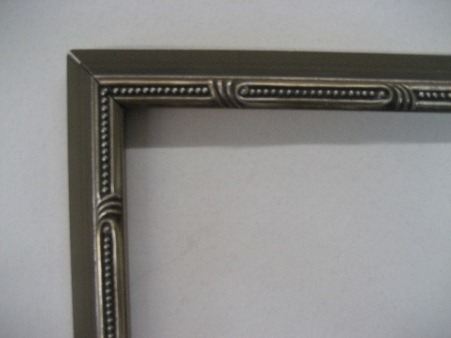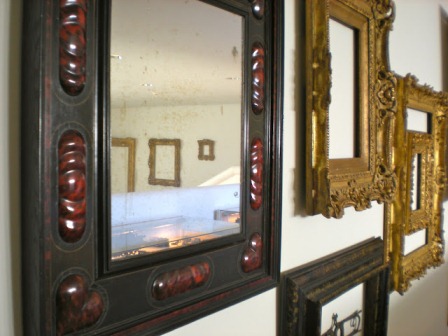(Image source: https://c2.staticflickr.com/2/1117/4603522172_58d18144dd_z.jpg)
While making your own frames at home may seem like an easy thing to do, many a time, it isn’t. It is easy for things to go haywire, which only leaves behind a mess and thoughts about what could have been. That’s why it is best to leave certain jobs to the professionals.
We all want our art work to look gorgeous and stand out. We want it to razzle and dazzle, and capture the fancy of the audiences. However, your art work alone may not be able to do so every time. Sometimes, a little help goes a long way in influencing the audience to succumb to the work’s charm.
A professional framing service is your best bet when you need to get a painting framed. But that’s not all that professional framers are for. The post lists a few facilities that a professional framing service can provide in addition to treating your artwork with the utmost care while framing it.
1. Determining the Structure
Typically, this step is given a miss as when you paint on a canvas or on a board, you tend to adjust its size in accordance with the shape of the canvas. However, if you paint on a normal sheet of paper, you may be left with extra paper around the edges which may need to be cropped. This is where the professional framer can help you.
A good framer will take some mounting board and talk to you about the parts of the painting that need to be trimmed off. Once that’s taken care of, the framer will make a few markings to mark the four corners to denote where the frames will go.
It makes sense to listen to the suggestions of the framers about this aspect as they’re experienced in this and have a sound idea of determining a suitable structure accurately. If you disagree with his suggestions, you can move the mount in different angles and see what the art work looks like. Whatever you decide will ultimately prevail.
2. Figuring Out the Mount
In case you’re wondering what mounts are, they are pieces of colored cards that are placed around the paintings before they are framed. In the USA, however, these cards are called mats and the backing board is called a mount.
Paintings may or may not have a mount, and the frame may embrace the edges of the paintings. But having a mount is preferable as it can help bring out the colors and enhance the overall appearance of the paintings. They may have multiple mounts, often with only a bit of the one complementing the painting showing.
Ask your framer for mount options and he will show you a range of samples in a variety of colors. He will also have a display board over which your painting will be fastened to make it easy for you to pick the right mount color. In doing so, you will have to view your painting from a distance to get a better idea of what it will look like once it is mounted.
3, Finding the Right Frame
(Image source: http://upload.wikimedia.org/wikipedia/en/7/7e/Fillet.JPG)
Professional framers stock up on an assortment of sample corners of frames. These too will be attached to the corners of your art work (aside from the mount board), for you to get a good idea of what it will finally look like.
If you find it difficult to envisage your painting as a fully framed one, use your hands or sheets of paper to cover up the rest of the exposed parts of the painting. That way you will see only the angles decorated with the sample corner.
4. To Go for Glass or Not?
Most framed art prints that we come across have a glass front. While it is important for watercolors, pastels, and drawings to be framed behind glass, it may not be necessary for paintings that are varnished.
Your framer will show you two types of glasses – reflective glass and matte glass (less reflective but absorbs some of the color of the painting) – and ask you to pick between the two. If you’re unable to decide, ask the framer to show you a few samples so you can see the difference and take a call accordingly.
5. Cost Estimation
(Image source: http://www.cruisinmuseums.com/2010_10_01_archive.html)
The cost of framing depends on the size of the art work, the number of mounts used, the frame chosen, and whether or not you choose to have glass in it. Your framer may either give you a quote as soon as you select your frame or give you an estimate over the phone. If you’re not happy with his quotation, feel free to try elsewhere.
6. When the Pick-Up Date Is Here
Just as you’re careful with all your purchases, be scrupulous with this one too. Before you pay for the framing, make sure the following are in place:
- Does it have a mount board? Has it been cut tidily?
- Is the mount flat and correctly placed?
- Has the frame been attached properly?
If you find any discrepancies in any of the above aspects, get them rectified before you make the payment. If you like the framer’s workmanship, do let him know about it. A little appreciation for a job well-done never hurt anyone!
Conclusion
All your art prints deserve a place of pride in your home or in the art gallery. Make sure you approach a professional framing service to adorn them with the most attractive and suitable frames, which will not only enhance their splendor, make them the cynosure of all eyes, but also keep them protected. The above points should give you a fair idea of how a professional framer can help you. Do make a note of them and make them work to your advantage.




